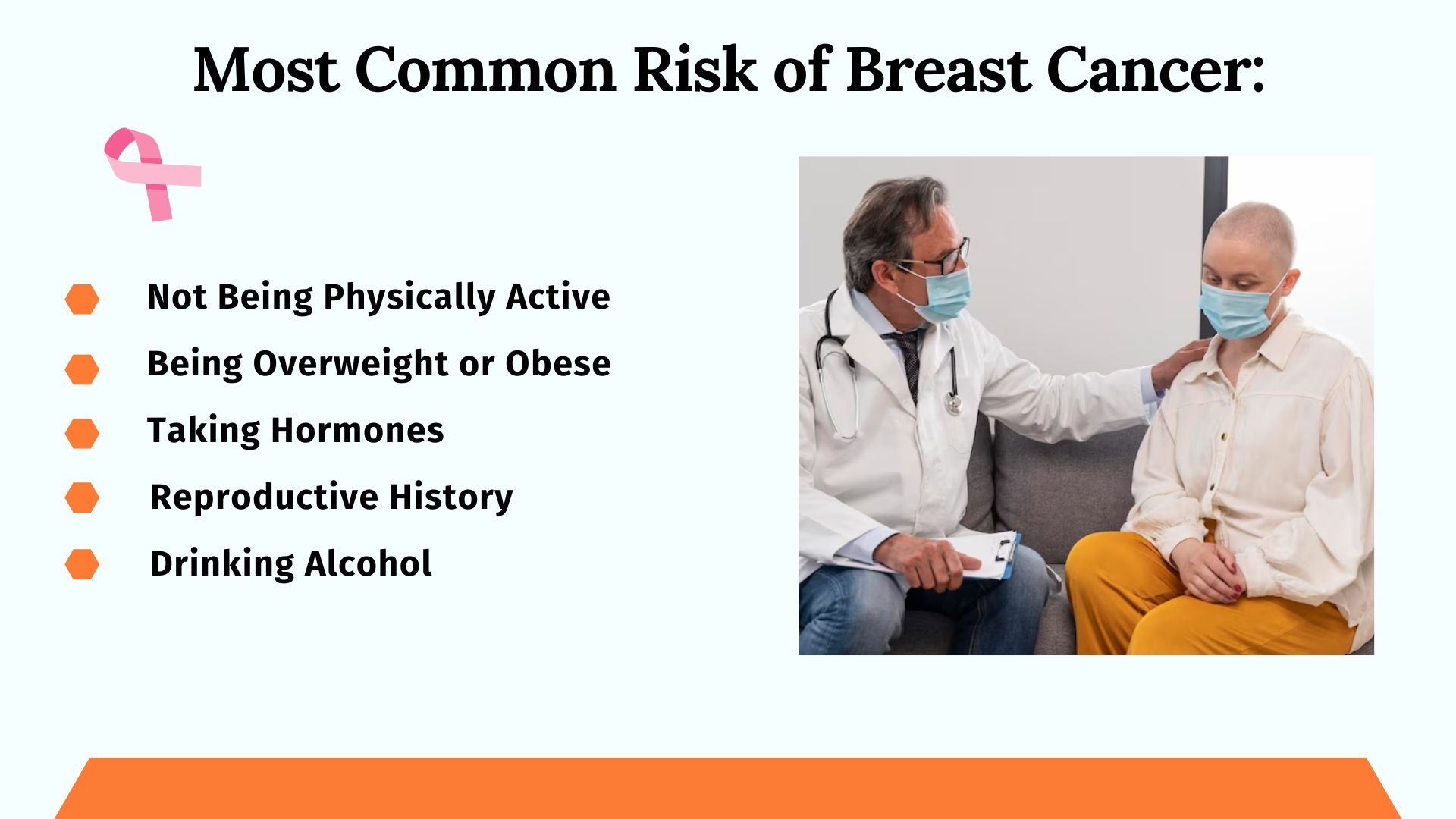Breast cancer is a life-threatening disease that starts in the cells of the breast. The breast is an organ present on top of the chest muscles and upper ribs.
The left and right breasts have many glands, ducts, and fatty tissues. In women, the main purpose of breasts is to make and deliver milk to feed newborn babies and infants. The amount of fatty tissue in the breast typically determines its size.
A malignant tumor is generally a group of cells that grows and destroys nearby tissues in this part of the body. Breast cancers usually start from different parts of the breast.
Spread Cancer into the Lymph System
Breast cancer typically spreads when the cancer cells get into the blood or lymph system and travel to other body parts. The lymphatic system plays a major role in our body’s immune system.
It is a network of lymph nodes, vessels, ducts, and organs that work together to collect and carry lymph fluid through the body tissues to the blood.
The clear lymph fluid contains tissue by-products and waste material, as well as immune system cells. In the case of breast cancer, malignant tumor cells enter those lymph vessels and start to grow in lymph nodes.
Mostly, the lymph vessels in the breasts drain into:
- Lymph nodes under the arm.
- Lymph nodes inside the chest.
- Lymph nodes around the collarbone.
If cancer cells have spread to lymph nodes, there is a higher chance that the cells could have traveled through the lymph system and spread to other parts of the body.
Women with cancer cells in their lymph nodes develop metastases, and some women with no cancer cells in their lymph nodes might also develop metastases later in life.
Most Common Risks of Breast Cancer
Certain factors contribute to the occurrence of breast cancer and controlling them:
- Not Being Physically Active
- Being Overweight or Obese
- Taking Hormones
- Reproductive History
- Drinking Alcohol
By controlling or eliminating all the above-mentioned factors, women can effectively lower their risk of getting breast cancer.
What Factors Make a Woman At High Risk of Getting Breast Cancer?
Getting Older:
The risk of breast cancer generally increases as a person ages. In most cases, this disease is diagnosed after a woman turns 50.
Genetic Mutations:
Women who have inherited changes to certain genes, such as BRCA1 and BRCA2, are relatively at higher risk of ovarian and breast cancer.
Reproductive Cycle:
Getting menstrual periods before age 12 and starting menopause after age 55 exposes women to hormones longer, and raises their risk of getting breast cancer.
Having Dense Breasts:
Dense breasts comparatively have more connective tissues than fatty tissues, which can sometimes make it challenging to see tumors on a mammogram. Moreover, women having dense breasts are more likely to get this disease.
Family History of Breast or Ovarian Cancer:
A woman’s risk for breast cancer is automatically increased if she has a family member or multiple family members on either her mother’s or father’s side of the family who has had ovarian or breast cancer.
Having a first-degree male relative with breast cancer also increases a woman’s risk of getting this disease.
Previous Treatment Using Radiation Therapy:
Women who had radiation therapy to the chest or breasts before the age of 30 are relatively at a higher risk of getting this cancer later in their lives.
Treatments for Breast Cancer
There are numerous treatment options for breast cancer, including chemotherapy, surgery, radiation therapy, immunotherapy, hormone therapy, and targeted drug therapy.
What might be suitable for a certain patient mainly depends on various factors, including, the results of lab tests, and the location and size of the tumor.
The healthcare provider tailors the treatment plan according to the patient’s unique requirements. However, it is not uncommon to receive a combination of different treatments in order to eliminate the tumor.
-
Lumpectomy
Lumpectomy also called a partial mastectomy, is a type of treatment that removes the tumor and a small margin of healthy tissue around it.
Typically, some of the lymph nodes in the breast or under the arm are also removed in this procedure. People who have a lumpectomy often have radiation therapy for a few weeks following this procedure.
-
Chemotherapy
Healthcare providers might suggest chemotherapy for breast cancer before a lumpectomy in order to shrink the tumor.
In some cases, it is also given after surgery to kill any remaining cancer cells and reduce the chances of recurrence of this disease.
If cancer has spread beyond the breast to other parts of a patient’s body, then the healthcare provider may recommend chemotherapy as a primary treatment.
FAQs
Is Breast Cancer Fatal?
It can be fatal, but the prognosis varies depending on factors such as the stage of cancer at diagnosis, the type of breast cancer, and the individual’s overall health.
It is important to note that early detection and treatment can greatly improve the chances of survival.
It is important for individuals to be aware of the signs and symptoms of breast cancer, such as a lump in the breast or underarm, breast pain or tenderness, nipple discharge, or changes in the appearance of the breast or nipple.
Women over the age of 50 or those with a family history of breast cancer may also benefit from regular mammograms or other screening tests.
How Does Breast Cancer Usually Start?
It usually starts when the cells in the breast begin to grow uncontrollably. In most cases, breast cancer begins in the milk ducts, which are the small tubes that carry milk from the breast to the nipple.



